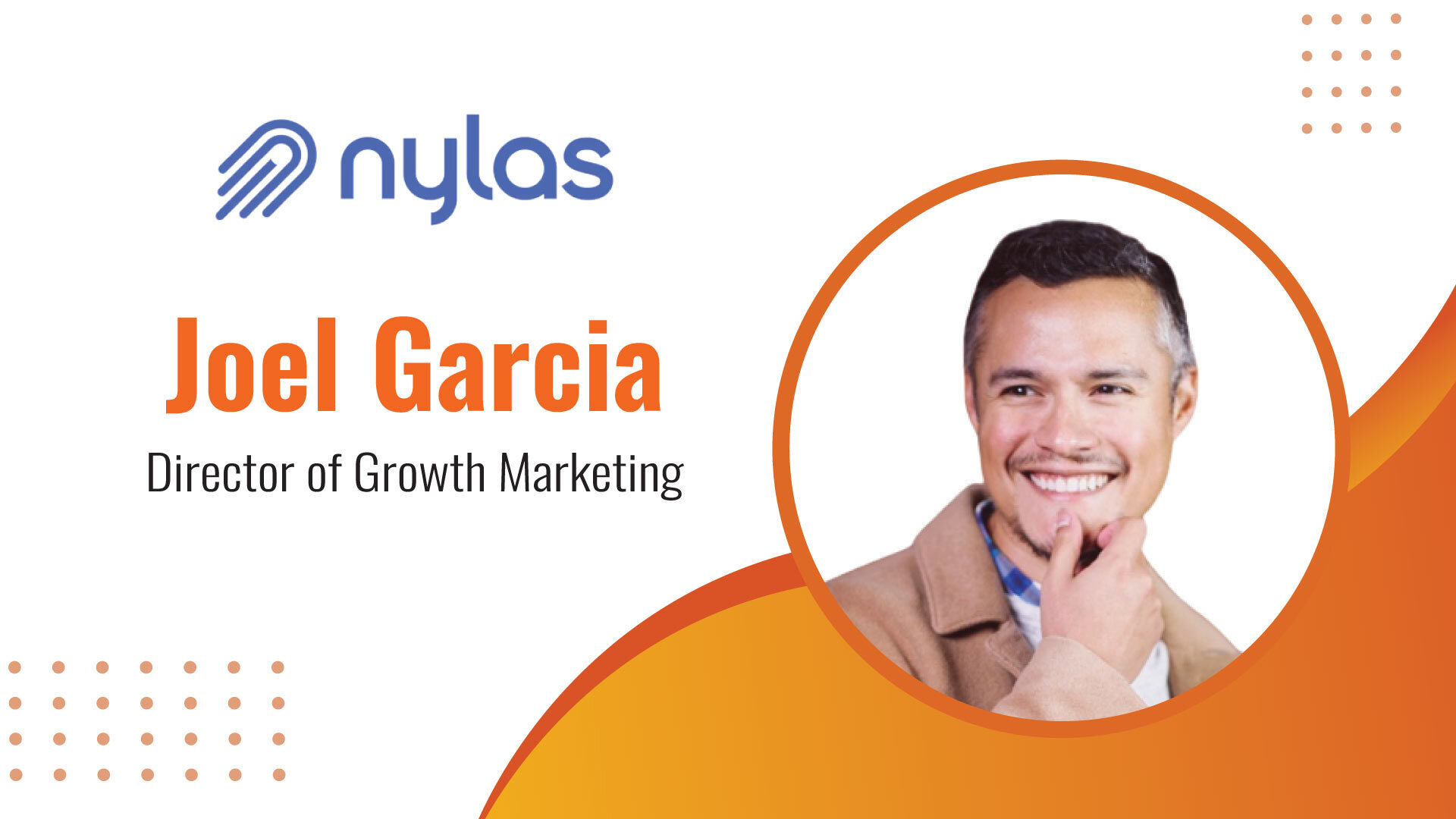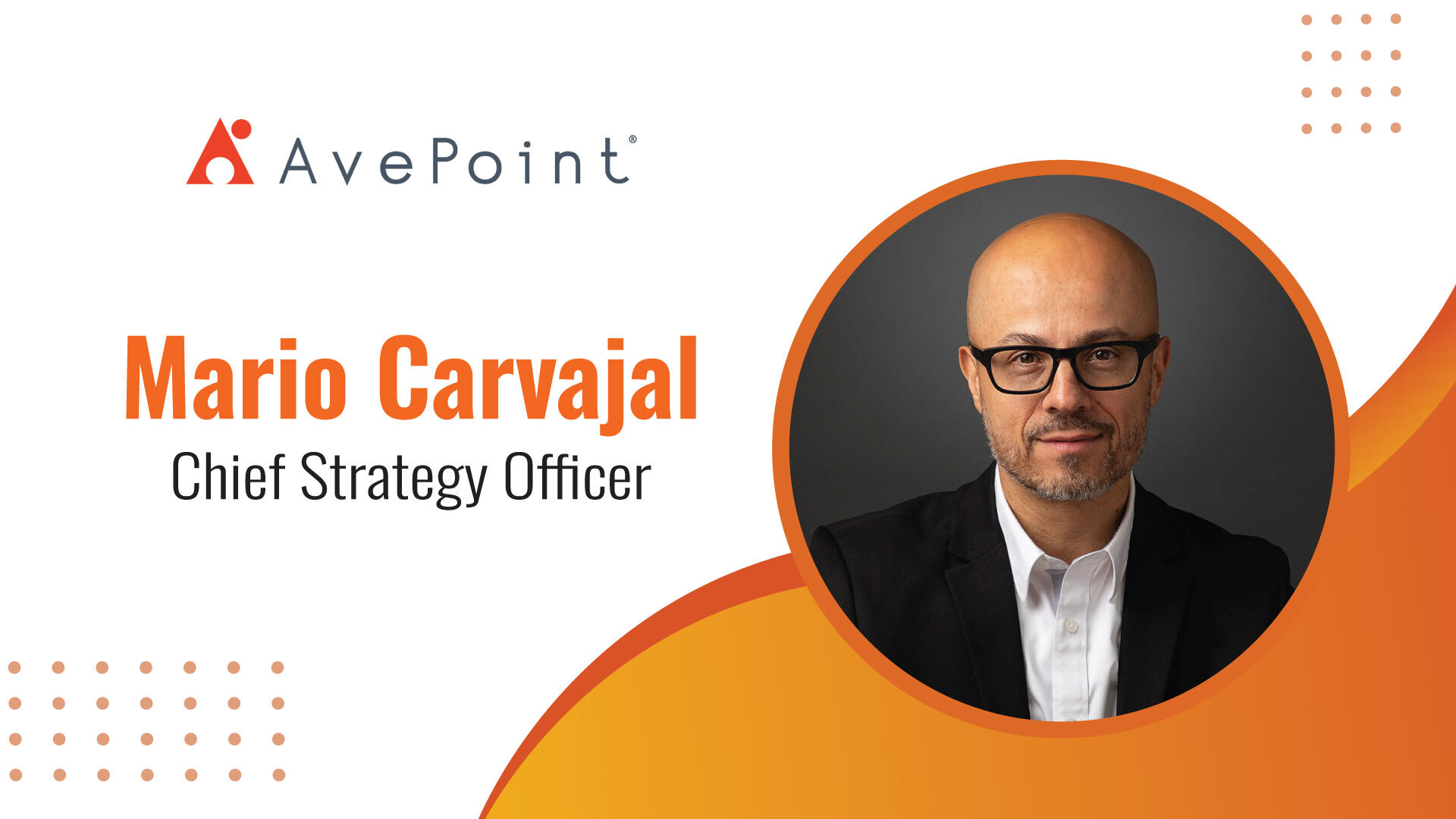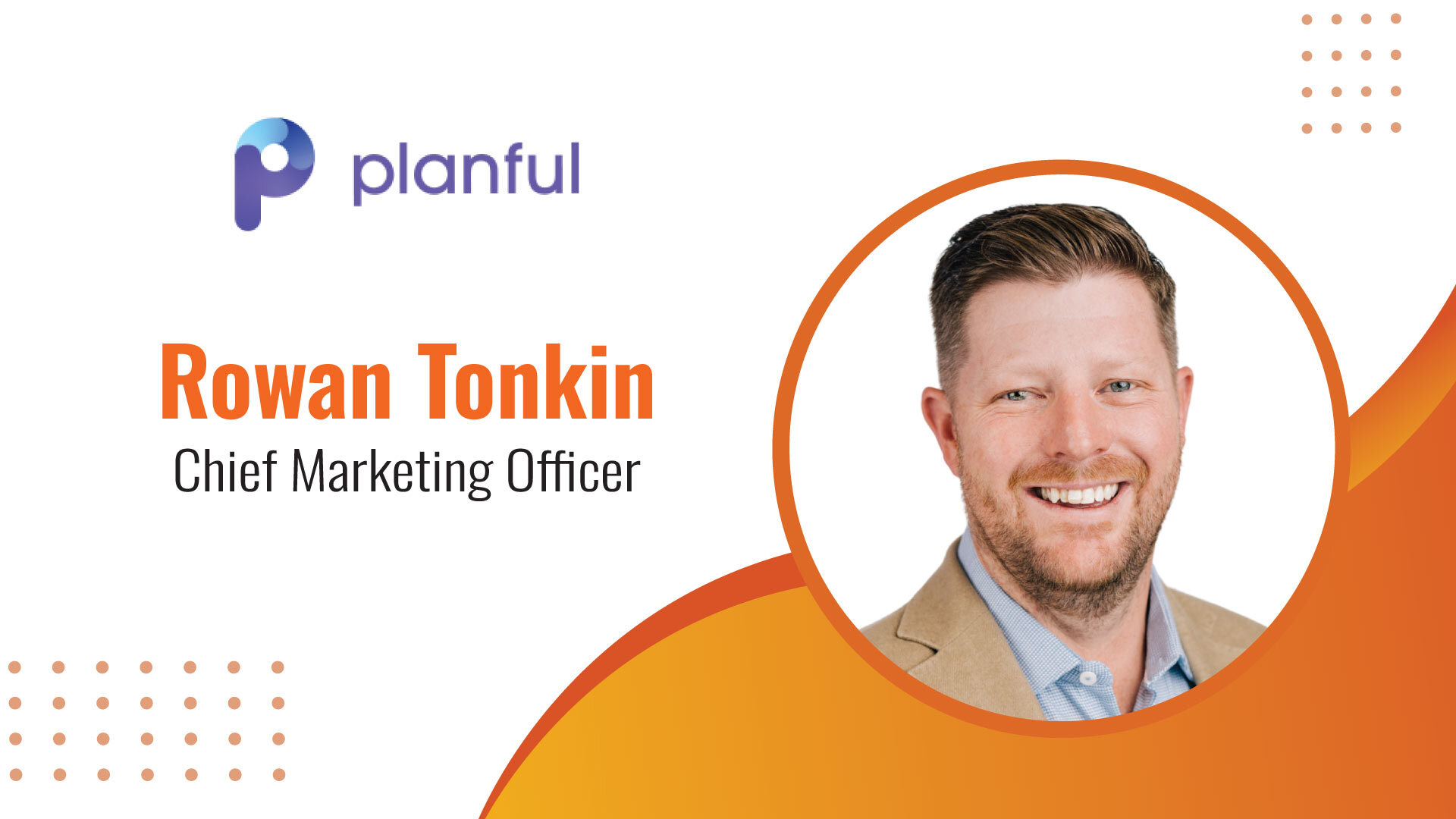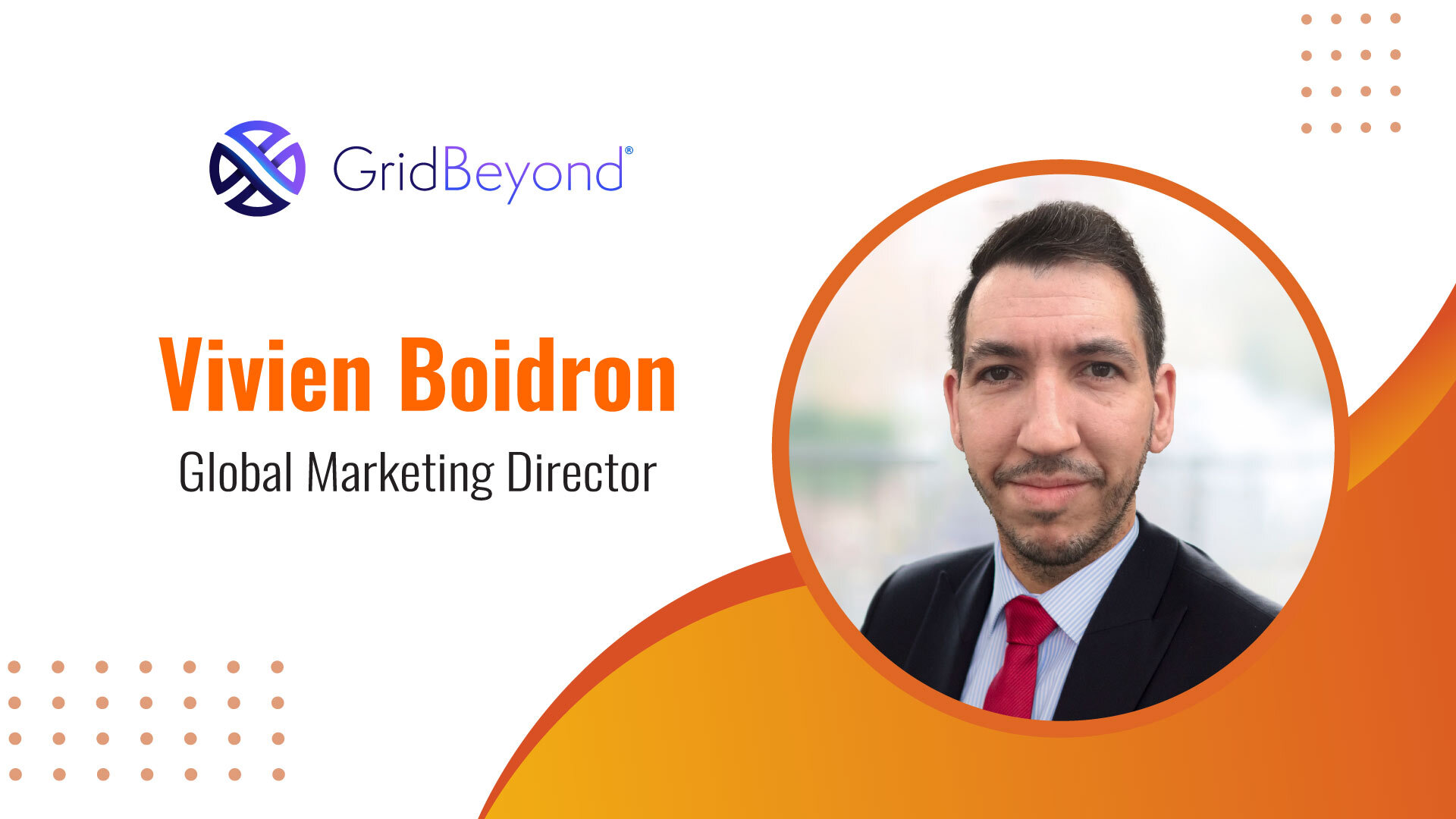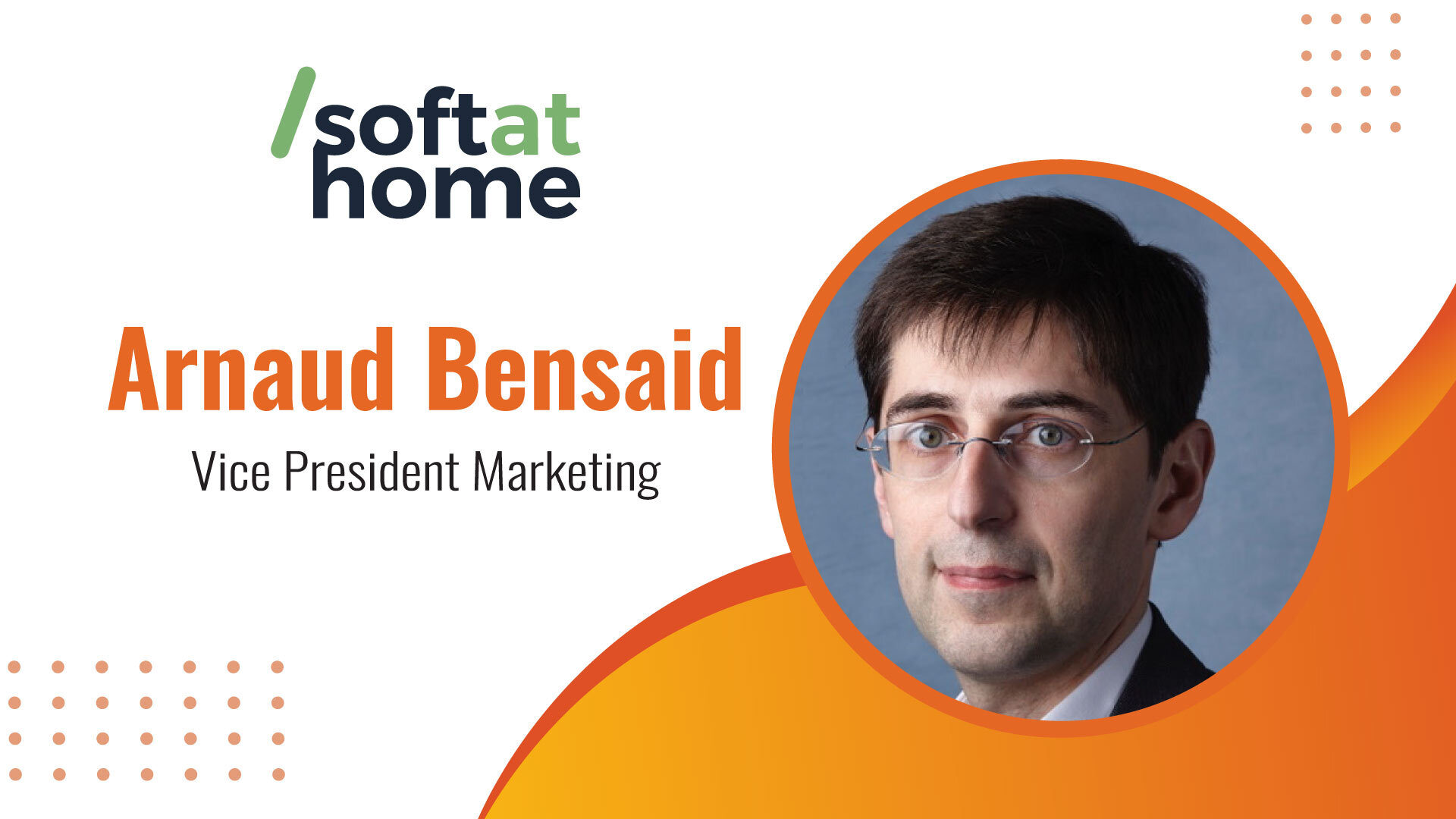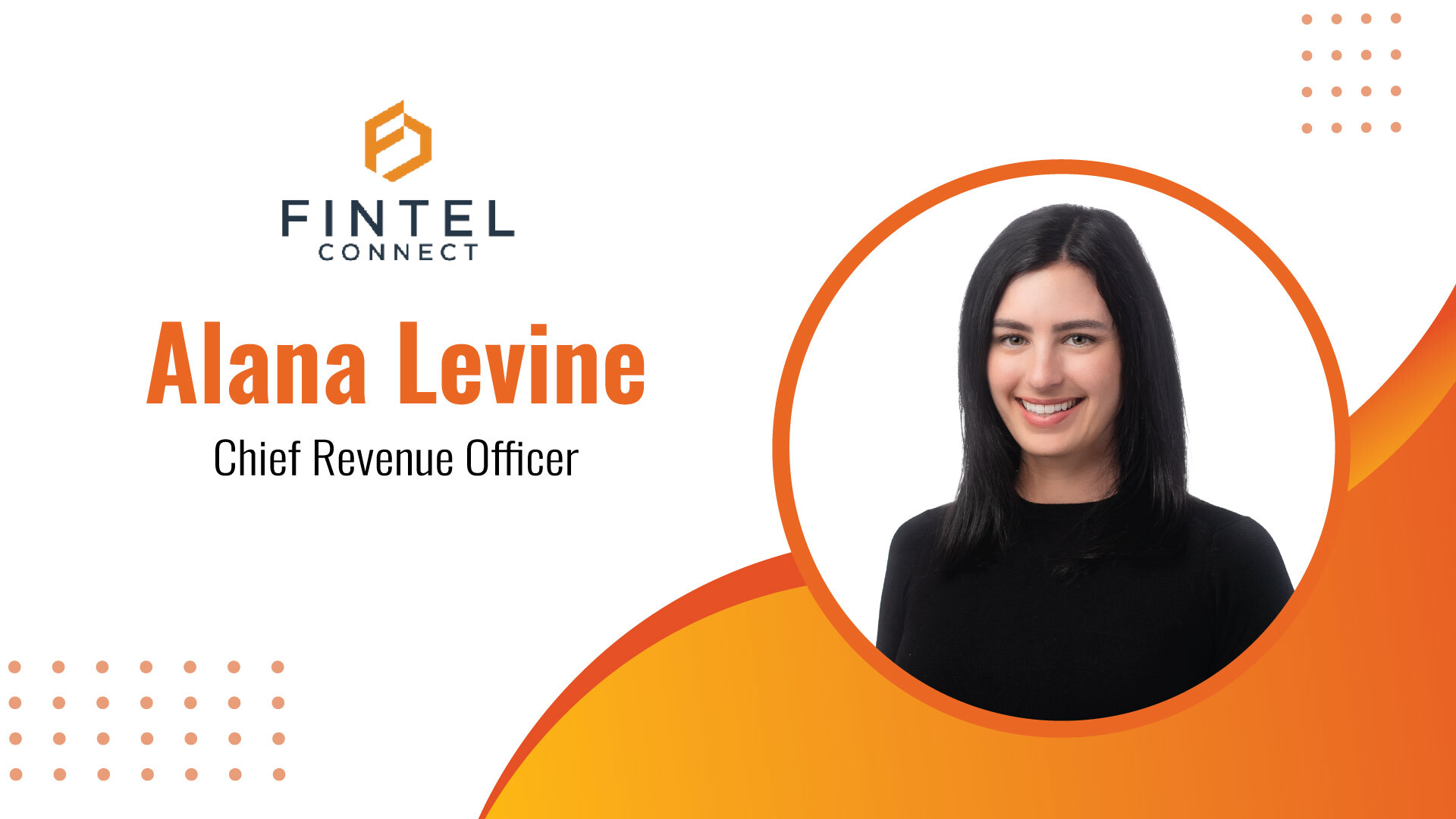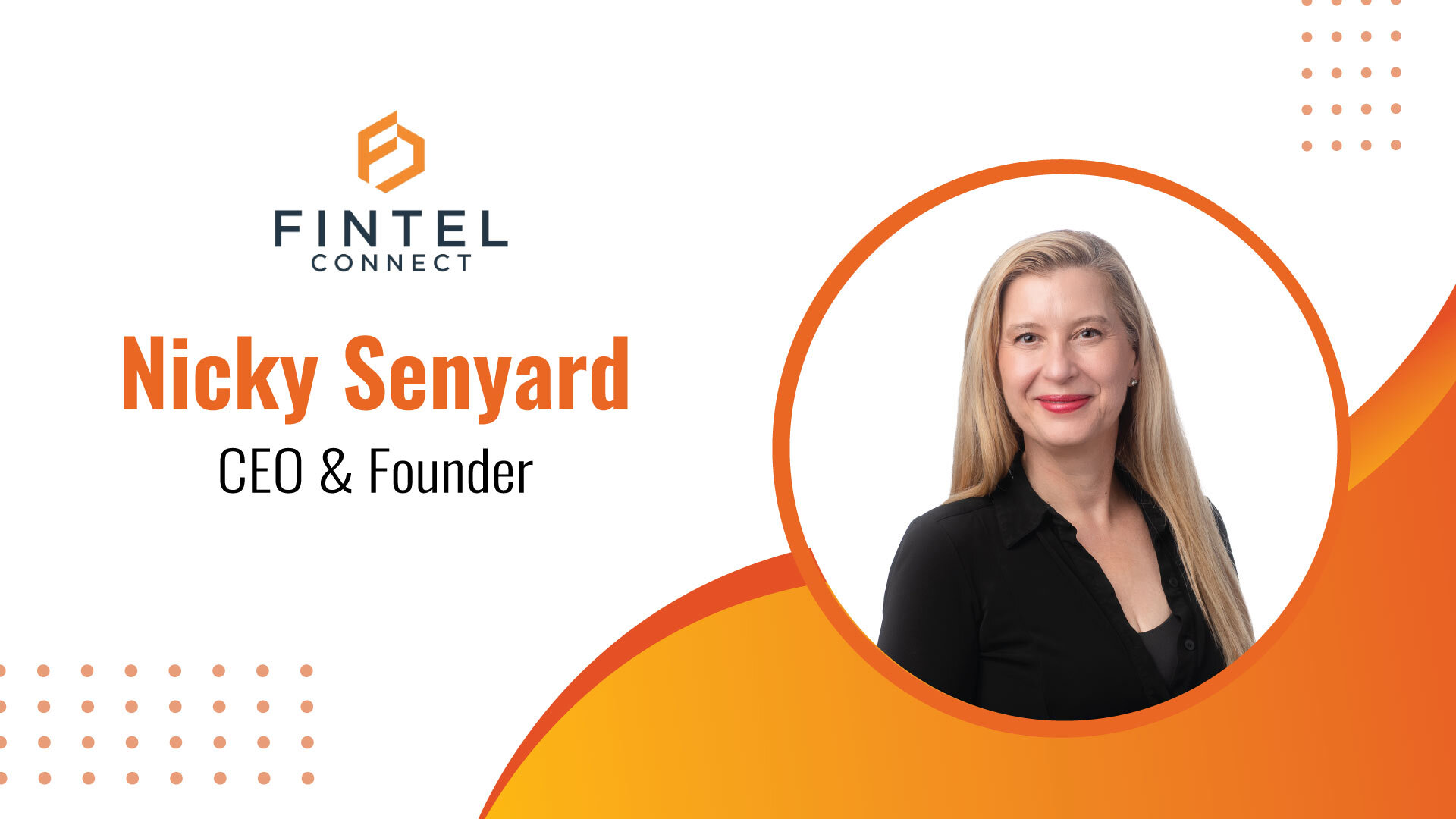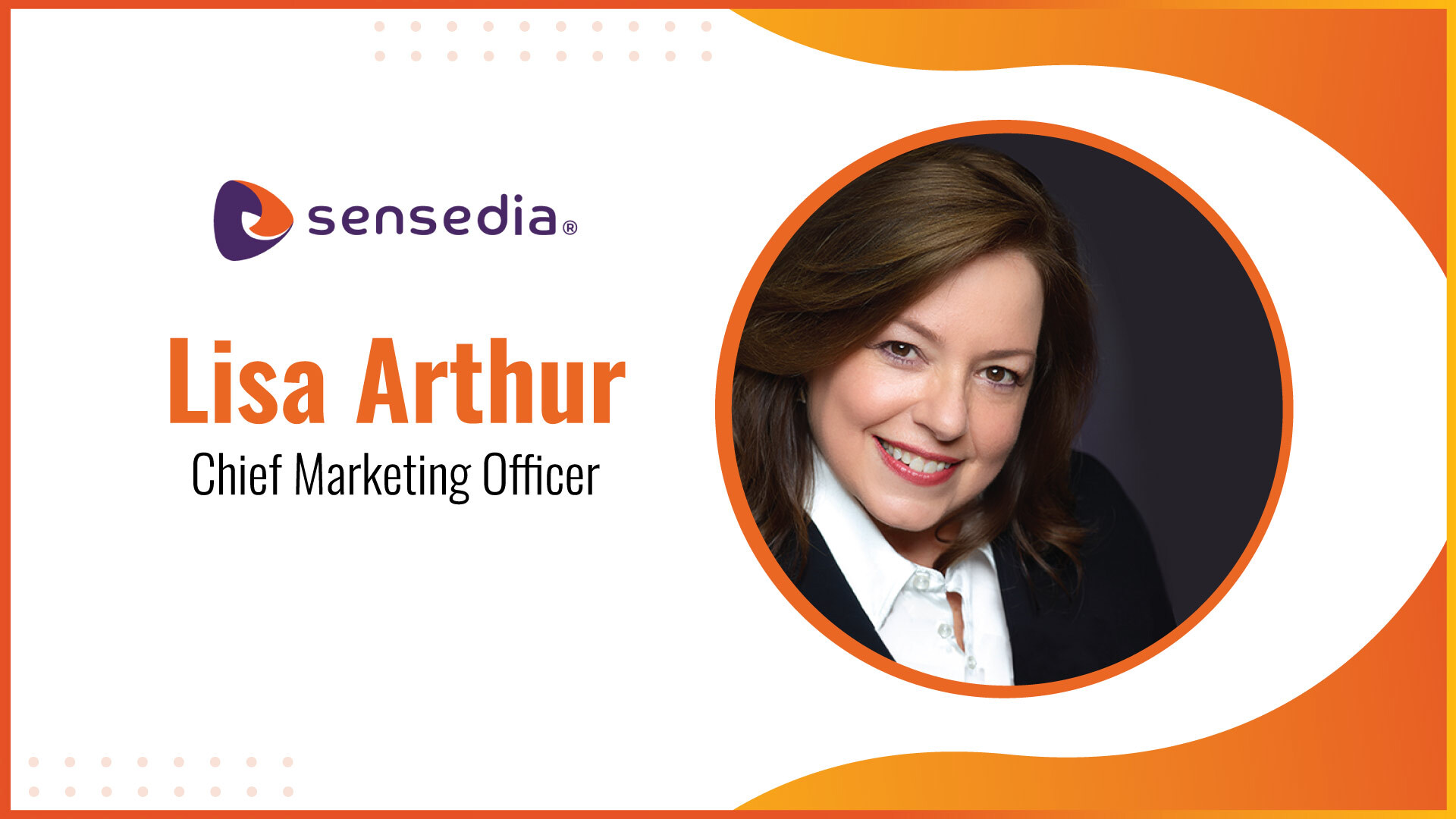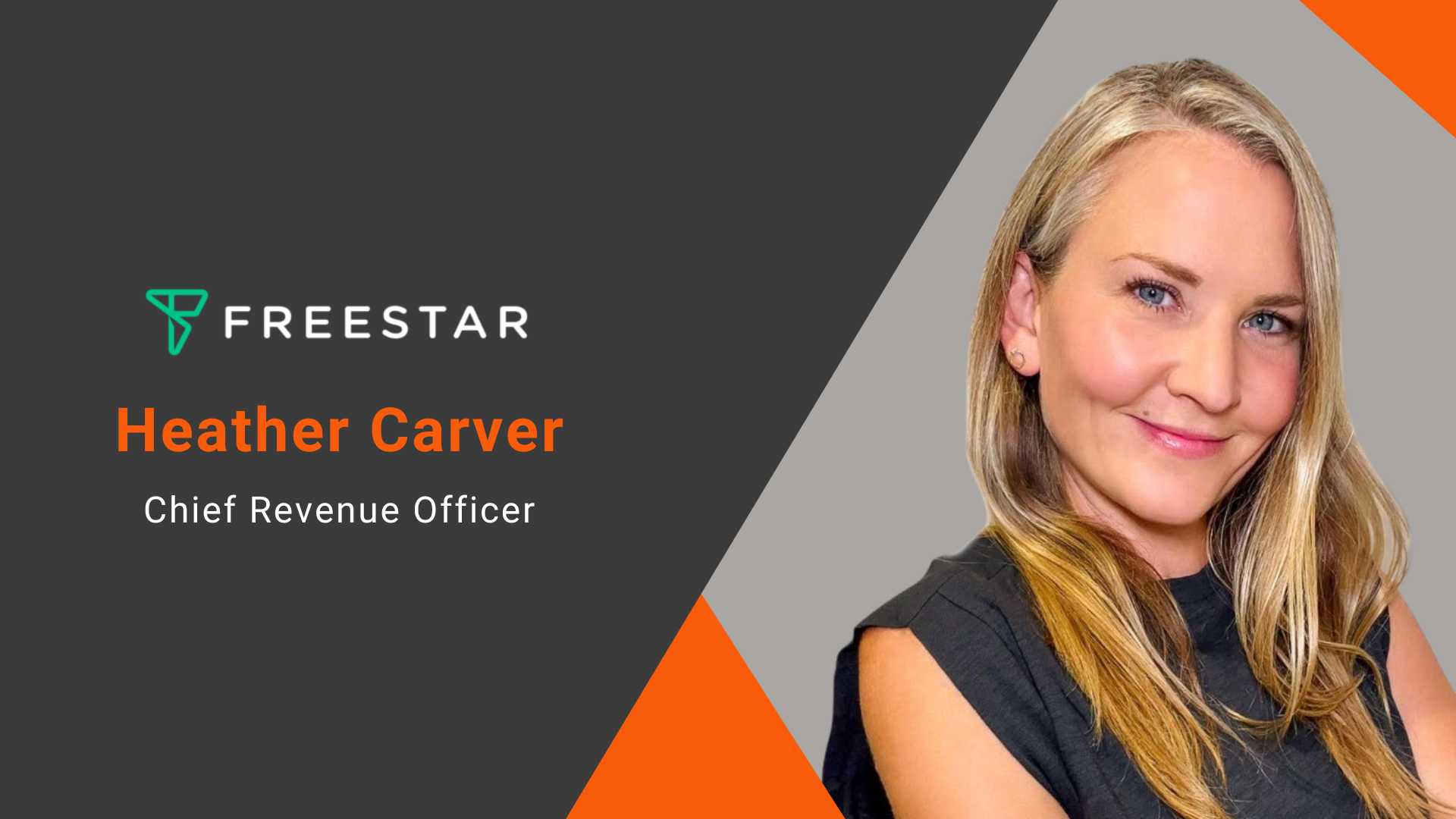
technology
MarTech Edge Interview with Joel Garcia, Director of Growth Marketing, Nylas
technology 9 Nov 2023
Welcome Joel! Could you recount your first marketing role in your career? Also, can you draw parallels and distinctions between that early experience and your current position as the Director of Growth Marketing at Nylas?
My first marketing role was at ReachLocal as a marketing ad editor. I was a rookie, mastering the nuances of paid search; now, at Nylas, I guide the broader marketing narrative. It’s a testament to the idea that from humble beginnings come great journeys. Each step, each challenge, has been a lesson propelling us forward.
How do Nylas’ email and scheduling APIs empower developers to enhance business productivity through improved communication and workplace capabilities?
Countless hours of productivity are lost due to things such as context switching, broken workflows, or tracking down relevant data points or information. Nylas aims to solve this and much more by making it simple, fast, and easy for developers to integrate data-rich communication channels such as email, calendars, and contact lists into their applications. Through these integrations, users can bridge the gap between their own applications and workflows and some of the most frequently used communication channels. This lets users have all their data, channels, and communications within a single interface, enabling business productivity and more simplistic workflows.
How has Nylas been differentiating its suite of API solutions from other vendors in the market?
Nylas is the only API solution specializing in both email and calendars. Rather than building integrations into every single service provider, Nylas makes it easy for organizations to securely connect their application to their users’ email, calendar, and contacts through a single point of integration. This allows companies to build these integrations significantly faster, meaning they are able to go-to-market faster as well.
Could you elaborate on the significant changes you’ve implemented in Nylas’ marketing strategy that have led to notable improvements for the company?
We’ve done a lot of work on our SEO strategy, created lots of content, and built a lot of campaigns through an SEO lens. This has allowed us to not only create meaningful content but has also made it easy to find and get in front of the right people.
How do Nylas’ solutions simplify the day-to-day tasks of marketers, ultimately resulting in streamlined and optimized marketing efforts?
Nylas allows marketers to send large-scale email interactions based on email service provider rate limits. Since these emails are able to come from a user account rather than a third-party IP, these emails tend to receive higher open rates, higher deliverability, and more. Nylas also arms marketers with up-to-date communications data, which can help marketers better understand their customers and curate more personalized workflows and experiences for them.
What specific criteria do you utilize when evaluating martech technologies for your organization?
One key criterion that I look for in martech solutions is how easily we can integrate it into our existing systems. Martech tools can be great, but if it is a challenge to connect it to what we already have, then it can create lots of short- and long-term challenges.
How will the partnership with Master of Code pave the way for innovative advancements in conversational AI chat solutions?
The combination of Nylas and Master of Code means businesses can more effectively meet their customers in some of the most frequently used communication channels, email, and chat. Additionally, this partnership will help companies combine innovative technologies like communications APIs and conversational AI without the complexity or time needed to build these solutions on their own.
Could you elaborate on the groundbreaking integration solution Nylas is developing and its potential to set new industry standards?
In a world where development hours are incredibly important, our APIs are helping developers and their teams save countless hours of development time. This not only allows organizations to ship products and features faster, but it also helps companies deliver a better experience for their developers, something that is becoming increasingly critical as a measure of success for companies of all sizes and industries.
MarTech Edge Interview with Mario Carvajal, Chief Strategy Officer, AvePoint
technology 17 Oct 2023
Welcome, Mario! We are curious to know about your professional life before AvePoint. How did your experience as the CTO of AvePoint help you develop the skills and vision that you need as the Chief Strategy Officer?
To start, I’m a first-generation American, and my career journey may seem unorthodox. With an art degree in hand, I was a struggling artist for some time before a combination of hard work and luck landed me at KPMG, where I ultimately became Creative Director.
My career journey has taught me that you should expect the unexpected, always be adaptable, and never be afraid to explore new avenues and learn new skills. Prior to joining AvePoint, I spent a decade in leadership roles as a programmer and systems integrator. My ability to remain curious opened pathways to learn a lot of skills across project management, design, sales, and leadership that allowed me to thrive initially.
My previous role as Chief Technology Officer at AvePoint provided me with a wide range of benefits and insights that contributed to my growth and development. Aligning strategies with overall business goals, leading innovation initiatives, and gaining a deep understanding of complex technology challenges and opportunities have provided part of the foundation I rely on today in my current role as Chief Strategy Officer. I now have a deeper understanding of the intersection of technology and business. This also allows me to present the vision to investors, to companies we are interested in acquiring, and to strategic partners and customers. Ultimately, my executive path has been all about believing in myself, being scrappy and hustling, and taking risks.
What key features and benefits of the AvePoint Confidence Platform enable organizations to optimize and secure their digital workplace? And how do the latest updates to the platform enhance its existing capabilities and performance?
AvePoint’s Confidence Platform powers digital workplace enablement at every stage of the digital transformation journey, including data transformation, workforce enablement, and cloud adoption. The Confidence Platform gives customers better insights into each of their workspaces, users, guests, and repositories so organizations can modernize, protect, and control their cloud environment.
The newest Confidence Platform updates build on these existing capabilities to help customers further modernize data with enhanced migration capabilities, upskill workforces with advanced reporting capabilities for educators and administrators, and measure transformation efforts with more robust analytics capabilities. We are also implementing AI and machine learning technologies to help customers achieve business value by swiftly detecting and guarding against ransomware attacks, ensuring policy enforcement for how information is accessed, and improving the lifecycle of information through strong data governance — and we intend to continue using this technology to improve our offerings.
How do you approach strategic planning in a dynamic and uncertain environment, such as during economic downturns or global crises? Can you share some examples of how you have successfully adapted the company’s strategy to cope with such challenges?
Organizations must always expect the unexpected — and be prepared to pivot quickly as market conditions continue to shift. Business leaders should not be afraid to reinvent the strategy playbook depending on economic downturns or global crises. For example, today, we’re focused on profitable growth, which means ensuring efficient sales processes, reducing unnecessary spending, and optimizing data storage costs. There are several underlying strategies that underpin this focus. We employ scenario planning methods to help us envision different go-to-market motions and assess their potential impacts on the business. We also apply the concept of the Blue Ocean strategy to help us identify new market spaces with little to no competition. By creating uncontested market segments, we can achieve high growth and innovation.
Another example (although this is not unique to us) was the COVID-19 pandemic, which drastically changed our strategic outlook and process. I was navigating the process of AvePoint’s IPO during this time, and we needed to pivot to working remotely basically overnight. This sudden change in workflows certainly altered our strategic planning — and reminded my team that you must always remain adaptable and communicative.
How does AvePoint use AI/ML to enhance its SaaS management solutions for modern digital workplaces and complex collaboration scenarios?
In today’s digital-powered workplace, securely utilizing AI is now key to powering productivity and streamlining insights and workflows. As any effective AI solution runs on high-quality data input — a top-notch proprietary data management strategy is needed to unlock true business value from the use of AI. AvePoint’s platform answers this call, working with customers for over 20 years on modernizing, controlling, and applying resilience to their data management practices — establishing the strong foundation needed for compelling AI solutions. AvePoint’s AI capabilities have already helped customers achieve business value by swiftly detecting ransomware attacks, ensuring policy enforcement for how information is accessed, and improving the life cycle of the information through strong data governance — and this is only the beginning. Seeing the potential that AI has to transform data insights and the workplace, AvePoint will continue to advance our AI capabilities to offer customers the most automated data management platform to optimize SaaS operations.
How do you approach mergers & acquisitions and strategic partnerships as part of AvePoint’s growth strategy?
When it comes to both partnerships and M&A, our strategy has always been to align with organizations that will expand our platform capabilities, help address customer needs, and expand into new geographical markets. For example, in the category of complementary technology, AvePoint acquired tyGraph in 2022 — a Canada-based provider of workplace analytics solutions — allowing our customers to discover critical workplace communication insights and make more informed decisions about their business. We have been able to integrate new features and functionalities into our platform as a result of this acquisition.
We also acquired Essential Co. Ltd. last year — a South Korea-based software solutions provider, that has allowed us to expand further into APAC. AvePoint will continue to work with global organizations that share our dedication to driving digital transformation and providing the most data-driven solutions for our customers.
Can you discuss any recent accomplishments regarding AvePoint’s strategic goals in which you played a decisive role?
As AI enables our customers to unlock advanced insights and power digital transformation, I’ve continuously guided AvePoint in growing our platform capabilities to become more AI/ML-enabled. We must deliver solutions that improve decision-making based on accurate and timely information. As customers will continue to seek more advanced and fully automated data management solutions in the coming years, I will continue to lead AvePoint in advancing our platform’s AI capabilities to deliver the most effective way to manage and govern data — with future plans to reveal new AI-driven platform enhancements that make data insights, recommendations, and protection more accessible. These initiatives are underpinned by a strategy to have a well-orchestrated data layer that enables a deeper understanding of business users and their preferences. This will lead to personalized experiences and improved customer satisfaction in using our products.
We just had our #shifthappens Conference in Washington, DC. It was great to gather in an in-person format, where our team and other industry leaders discussed experiences, strategies, and best practices that define digital workplace transformation.
What essential advice would you offer upcoming leaders in developing robust people skills necessary for succeeding in the evolving business landscape?
In today’s business environment, remaining agile and communicative is key. We’re still navigating an unpredictable macroeconomic environment, and with emerging technologies rapidly transforming the way we work and live, you should model the growth mindset for your teams. It essentially means as organizations continue to invest in new workplace technologies and advance digital transformation, business leaders must prioritize continuous education and upskilling opportunities — equipping employees with the technology skills and confidence needed to boost productivity and stay adaptable.
Business leaders must also be able to communicate effectively with employees, take feedback into account, and put the controls in place to create a successful and dynamic work environment. To retain top talent, hands-on and attentive team leadership is now a key skill for business leaders to possess.
MarTech Edge Interview with Rowan Tonkin, Chief Marketing Officer, Planful
technology 3 Oct 2023
Welcome, Rowan! Tell us about your background. How did you get into Marketing, and what was your path to Chief Marketing Officer like?
My marketing journey started from a rather unconventional point. I began my career working for a marketing technology company in customer support after completing my degree in computer science. I started helping out the professional services team in the background with their implementations, and as I got more involved in ensuring customer success and understanding their pain points, I moved into a customer-facing role, participating in professional services calls and managing implementation projects.
My experience working directly with customers sparked my interest in showcasing the value of our platform, leading me into a role in presales. I spent almost 10 years in presales, occasionally dabbling in sales and customer success roles throughout. This combination of roles focused on post-sale and presales activities helped me gain valuable experience working directly with customers and solving their current and future needs.
After years of talking with marketers as my customers, I joined a product marketing team tasked with launching a new marketing application. While my background had been deeply rooted in marketing concepts and practices, this was my first official role as a “marketer.”
During my time in product marketing, my accumulated knowledge gained working directly with customers and prospects helped us to successfully launch the new product. Over the next four years, I continued to expand my responsibilities within the wider marketing organization, taking on roles related to demand generation and serving as an evangelist for our products.
I finally moved on from that company and assumed leadership of the operations, design, and creative team at another startup, and later took on revenue operations there as well, effectively running all the shared services of the team. Again, these varied experiences dealing with customers from different perspectives gave me a well-rounded view of how marketing, sales, product, and other roles all need to align to make a company successful.
Ultimately, and, I believe, helped by my experiences across various roles supporting go-to-market strategy, I was appointed as Chief Marketing Officer (CMO) at Planful. This role marked the culmination of my journey across customer support, presales, and product marketing, a combination of experiences that helped prepare me to be an effective leader of our company’s marketing efforts.
How does your vast experience in revenue operations help you better grasp the dynamics of marketing and business, leading to positive outcomes?
My background includes roles across customer success, sales, and marketing teams. This exposure has given me valuable insights into the unique challenges and perspectives of each of these departments, and understanding their intricacies and dependencies allows me to see the bigger picture and recognize how they are interconnected within an organization.
Revenue operations requires me to understand the expectations and objectives of all of these stakeholders and be able to sift through the data and operational drivers that direct their activities. If we can effectively align marketing strategies with what drives revenue, we can positively influence the commercial outcomes of the company, namely revenue but also profitability and growth.
Revenue operations also plays a crucial role in streamlining processes between marketing, sales, and customer success teams. It’s perceived as a technology-driven function, but it takes a collaborative approach to eliminate friction between the teams and make it easier to execute marketing campaigns and initiatives efficiently. Whether it’s running a customer marketing campaign, identifying target markets, or optimizing existing campaigns, teams need to be on a shared data platform that accelerates communication, improves collaboration, and aligns execution while reducing operational obstacles. Revenue operations is an important role and is really an unsung hero of business success.
As you learn how revenue operations impact commercial success, you start to get a better appreciation for how other critical success metrics, such as loyalty and retention, can make or break commercial success. When you can connect it all together, again on a shared data platform, it empowers you to be more effective with your marketing investments because you’re aligning marketing efforts where they matter most. When you can do that, you’re going to see better and more positive outcomes in commercial and financial terms.
How is the Marketing department helping Planful stay competitive in today’s market?
We take pride in how the Marketing department at Planful plays a crucial role in helping the company stay competitive. Here’s what we do that makes us stand out:
Continuous Evolution of Brand and Vision: We know the market is constantly changing, and Marketing leads the company to stay ahead of that change. This involves the obvious aspects of actively listening to our customers and prospects and monitoring industry trends to understand the future needs of our core buyers. But we’re also pulling in competitive, analyst, influencer, and other insights and working with our products and development teams to understand what’s possible and where we need to be next quarter, next year, and several years down the road. Marketing then defines and refines how we’re going to get there.
Messaging and Storytelling: Once we know where we’re going, Marketing builds messaging narratives and highlights customer success stories to demonstrate how Planful delivers value to customers. Our humanized, relatable storytelling approach emphasizes how Planful helps our customers – the companies, yes, but also the people doing the work – stay agile, resilient, and adaptable to whatever challenges they might face in the future. Saving time during the monthly close process saves a company money, for sure, but it also helps finance and accounting teams get home in time for dinner or attend their kid’s soccer game. It’s a combination of those personal and professional aspects that really make a difference to our customers.
Collaboration with the Product Team: Marketing collaborates closely with our product team to identify emerging trends that require us to invest in new products or enhance existing capabilities. This collaboration ensures that Planful’s product offerings align with market demands, our customers are getting the most value possible from the platform, and our product roadmap supports our short- and long-term visions for the brand.
Alignment with Our Customers: Every company says their customers are the top priority, but at Planful, it’s a key part of our culture. “We put our customers first” is the first phrase of our number-one company value. We put a lot of effort and time into actively listening to our customers and hearing what they want from these solutions. Marketing ensures that the company’s messages and product offerings are aligned with these needs but also that we’re delivering them in reality. It’s not just a marketing message; what we hear from customers enhances our competitiveness.
What everyday steps do you take to stay ahead of the emerging market trends and technologies to ensure your marketing initiatives remain innovative and competitive?
Technologies and trends move fast these days, and I use a variety of methods to stay current with what’s happening.
Actively participating in marketing communities helps me stay ahead of emerging trends. I am an active member of various marketing communities, such as The Next CMO, CMO Coffee Talks, and Exit Five. While I may not always post, I consistently engage by reading, observing, and consuming content within these communities. This helps me stay informed on the latest trends and emerging technologies in the field.
I also host our Being Planful podcast, where I interview finance, accounting, marketing, and business leaders & influencers to understand how the market is changing and how those changes impact their strategies. It really is a great forum where I get to learn as much as our listeners.
Utilizing LinkedIn is another way to stay in the know. LinkedIn is a significant platform for networking and staying up-to-speed on industry developments. I actively use it to connect with other professionals, share insights, and follow thought leaders in marketing and related fields.
Never underestimate the power of your personal network, too. Those friends and colleagues you gain along the way are the CMOs and business leaders of today and tomorrow. It’s critical to nurture that network, no matter where you see your career going. I maintain an ongoing dialogue with my peers, particularly other CMOs, to exchange ideas and discuss what strategies and tactics are working for them. It’s a two-way conversation that provides valuable insights into emerging trends and technologies.
A point of advice I’d give is to go beyond surface-level trend-spotting by analyzing the intention behind marketing strategies. I want to understand why certain tactics are effective and for which specific audiences. It’s crucial to determine the underlying business goals behind trends to avoid blindly copying them. Paying attention to whether a particular trend or technology aligns with my target audience’s preferences helps me avoid applying marketing strategies that might be popular but ineffective for our audience.
How does Planful help CMOs and marketing professionals manage their budgets efficiently?
In late 2022, Planful acquired a marketing planning software company called Plannuh, which is now Planful’s marketing solution. At most companies, marketing is typically the largest discretionary budget outside of headcount, and that spend is notoriously hard to tie back to company results. As a marketer myself, I know the value of providing marketing teams with a platform that can help them make better decisions in real-time and that can facilitate better connections and conversations between CFOs and CMOs. Planful enables teams to measure marketing at every level of the plan for full visibility and team efficiency.
Alignment of Spend with Goals: Planful connects all marketing spend across various tactics to specific goals. This alignment ensures that resources are allocated effectively, eliminating waste on marketing spend that doesn’t contribute to achieving those goals.
Automation of Expense and Budget Management: Planful automates many aspects of marketing expense and budget management. This automation streamlines processes within the marketing department, saving time that would otherwise be spent on manual tasks such as accruals adjustments and amortizations in a marketing budget.
Goal-Based Budgeting: Planful’s marketing solution supports goal-based planning, allowing marketers to create budgets directly tied to their objectives. This goal-oriented approach ensures that budgets are allocated to initiatives aligned with the desired outcomes.
Outcome Tracking and Analysis: Planful enables marketers to connect their automated and goal-based budgets to measurable outcomes. This capability allows marketers to avoid uncertainty and understand what strategies and tactics are working effectively. By identifying successful initiatives, marketers can allocate more investment to those areas, ultimately leading to improved performance and the ability to outperform targets and competitors.
How does Predict, Planful’s proprietary embedded AI/ML solution, empower organizations to make better decisions?
Planful Predict empowers organizations with intelligent recommendations, which enables them to make better, faster decisions. Predict: Signals alerts users to errors, while Predict: Projections creates smarter forecasts — all using proprietary algorithms built natively into the Planful platform.
In today’s business landscape, changes occur rapidly due to various factors — geopolitical events, supply chain disruptions, and internal developments. Predict recognizes the importance of frequent course corrections and enables organizations to make smaller adjustments to their plans throughout the year rather than relying on infrequent forecasting cycles.
Planful’s Budget Manager Experience makes it easy to collect forecasts and insights from non-finance people across the organization, and that data informs the AI engine behind Predict. This efficient data-gathering process ensures that valuable input is obtained from different teams, regions, and product segments, enabling AI to deliver a more comprehensive and accurate understanding of the business’s financial performance.
Predict acts as another pair of eyes for error identification as budget managers input their data. It scans through the submissions to detect errors or anomalies in the data. This capability helps the finance team quickly identify trouble spots in forecasts and take corrective actions, doing in minutes what previously took hours.
Predict also makes it easy for the business to submit new and more frequent forecasts and updates by using AI to interpret historical data and offer baseline forecasts that match the cadence of the business. It also provides guardrails of upper and lower bounds to ensure forecasts are reasonable based on historical data. By speeding and easing forecast & budget creation, Predict allows organizations to forecast and plan more frequently and adapt & refine their strategies as needed.
By gathering insights from the entire business more frequently, executive teams gain a clearer understanding of market challenges and opportunities, and Predict uses AI to help make the entire planning process more accurate and effective. The enhanced visibility enables leaders to make informed decisions and respond rapidly to changing circumstances. Ultimately, this leads to better outcomes for the organization as a whole.
MarTech Edge Interview with Vivien Boidron, Global Marketing Director, GridBeyond
technology 14 Sep 2023
Welcome, Vivien! What piqued your interest in the marketing function leading up to your current position as the Global Marketing Director of GridBeyond?
With deep roots in the energy sector, from nuclear R&D to smart grid, I hopped aboard GridBeyond in 2013 as they expanded from Ireland to the UK. What drew me in? The chance to spearhead an industry on the brink of explosive growth – energy, right at the grid edge. It was a thrill to fuse technology innovation with sustainability objectives. The CEO’s vision was perfectly aligned with my own: helping more renewables find their place in the energy we use and driving the net zero transition. By translating GridBeyond’s technical prowess into marketing that kicks open doors, we have shifted perceptions towards a zero-carbon world while proving that it’s possible to reduce the overall cost of the energy transition for consumers of all types.
Starting as the lone marketer in a 12-person team, with only one PowerPoint deck to build from, the journey has been about developing GridBeyond’s marketing function from infancy into an impactful global presence, ensuring the company’s success. Today, we are more than 130 colleagues over 4 continents in a dynamic industry that demands constant innovation and adaptation. Building the marketing foundation from the ground up has been a challenge at times, but the thrill of translating complex technical capabilities into forward-thinking marketing and communications that not only actively drives demand for the company’s services but also shapes perceptions around the future of the energy sector is incredibly fulfilling.
We are eager to understand how GridBeyond’s platform, Point, facilitates a seamless transition to Net Zero for companies. What is the role of AI within this platform, and how it aids in achieving the desired outcomes?
At GridBeyond, we leverage the power of AI to innovate and collaborate with our customers to create optimal value from their assets, whether it’s energy demand, generation, or storage. The revenues and savings generated from activities that are relatively easy and/or inexpensive to implement can then be used to map the future journey of our clients toward delivering their own zero-carbon future while simultaneously supporting grid operators to integrate more renewables into the wider energy mix; by supporting the energy transition and actively contributing to sustainability targets from both the grid down and the customer up perspective.
Our Virtual Power Plant (VPP) platform, “Point”, serves as an all-encompassing solution. Whether companies are embarking on their net-zero journey or making investments in new technologies, “Point” maps, forecasts, finances, measures, reports, and executes, while our experts can support helping our clients plan the next step on their net zero pathway in a way that is most cost-effective and least disruptive to their existing business operations.
At the core of this cutting-edge platform lies a powerful AI-powered optimization engine that leverages Monte Carlo simulations to hone and improve understanding of energy asset management, allowing for more informed decision-making, enhancing revenues, optimizing project design, and operational strategies. By combining this with automated trading and asset controls, the platform maximizes profits while aligning with environmental and operational targets. The platform orchestrates real-time energy design, forecasting, optimization, and control. This synergy of machine learning, AI, and data solvers with our trading team unlocks the full potential of energy storage and renewable portfolios.
On-site metering and control hardware feeds back to the Point platform to analyze and optimize the client’s assets. Detailed forecasts and trade analyses are readily available. The Robotic Trading function automates bidding processes in line with the customer’s chosen strategies. With AI-powered tools, portfolio expansion, optimization for revenues, savings, and ESG improvements are strategically guided. GridBeyond’s platform doesn’t just optimize energy – it optimizes impact, tackling the challenges our clients face in their journey to net zero.
In essence, the platform leverages clients’ assets, strategically placing them in the right energy markets at the right time to generate revenue and savings that fund further net-zero endeavors.
Could you elaborate on the missions & visions driving GridBeyond’s operations? Furthermore, we are curious about the strategies you employ to successfully attain these objectives.
GridBeyond’s vision is bold: delivering a global zero-carbon future. Our mission is driven by leveraging AI to innovate and collaborate with our customers to create optimal value from energy generation, demand, and storage to deliver an electricity sector free from carbon emissions.
GridBeyond’s vision translates into action; we have invested significantly in strengthening our in-house R&D, data science, trading expertise, and risk management to meet the evolving demands of decarbonized, digitalized, and decentralized energy networks. We are also transitioning to a SaaS model for energy management, forecasting, trading, and carbon management. The strategic acquisition of Veritone Energy also enhanced our technological capabilities and SaaS-driven vision.
Ultimately, GridBeyond’s strategy is centered around driving sustainable impact. We transform how businesses optimize revenues and savings from their energy assets and their resilience, as well as finance and accelerate their own renewables integration, leaving a lasting imprint on the journey toward a zero-carbon world.
As the Global Marketing Director, you’ve undoubtedly made significant contributions to GridBeyond’s marketing success. Could you share some pivotal changes you introduced and elaborate on their impact on business outcomes?
The marketing team has supported the exceptional growth of the business with a turnover surging from €1 million to over €30 million. We’ve diversified our reach, expanding from a single country to six and selling from one industry to 20+. Our product portfolio has evolved from one offering to a comprehensive platform comprising 60+ separate but stackable solutions.
These growths were challenging for the marketing team. The secret to making it happen – integration and processes implemented in a way that supports the wider businesses while still allowing space for improvements, good communication both within the team and cross-departmentally on new ideas, and agility in how we work towards our shared vision.
I’ve championed growth-focused, customer-centric Account-Based Marketing on a global scale through automated drip campaigns driving engagement that are reported on the CRM. Beyond that, sales and marketing platforms have been designed to ensure integrations and workflows are in place that streamline database, CRM, marketing automation, and CMS, allowing seamless cooperation between different departments and smooth delivery and progression of opportunities from visitors to lead, MQL, SQL, to clients, their installation, NOC supervision, and finance. This has resulted in the evolution of our systems from a basic sales tool to a holistic customer journey management ecosystem with forecasting, automated sales process, and reporting built for sales management, install planning, and monitoring to a board-level view of revenue and gross margin.
We’ve also achieved remarkable milestones, earning accolades like the Marketing Team of the Year Award and the highlight given by National Grid’s Power Responsive to the GridBeyond Academy for fulfilling the industry objective of increasing reach and improving accessibility to the services available through National Grid - one of the areas GridBeyond covers in its suite of energy solutions.
The introduction of the GridBeyond Academy, complete with resources, glossaries, white papers, webinars, and podcasts, empowers businesses to navigate the energy landscape with confidence. These pivotal changes collectively underline our commitment to simplifying complexities while driving remarkable growth and customer satisfaction.
Could you shed light on how GridBeyond leverages cutting-edge technologies to gain a competitive edge and enhance marketing outcomes?
We use a variety of cutting-edge technologies, including engagement and prospect journey automation, machine learning, and big data analytics. These technologies allow us to:
- understand our customers’ needs and preferences in real-time;
- predict their future behavior;
- personalize our marketing messages to our prospect’s expertise and needs;
- measure the results of our marketing efforts more accurately.
As a result, we are able to reach our target audience more effectively, generate more leads, and close more deals.
We use machine learning to segment our customer base and personalize our marketing messages. We send different messages and industry insights to prospects and existing clients based on their engagement patterns, location, persona, expertise, and other data points. We then constantly refine the messages and channels according to what works best for conversion.
We use big data analytics to measure the ROI and impact of our marketing campaigns. This helps us to optimize our campaigns and get the most out of our marketing budget.
We are constantly looking for new ways to use cutting-edge technologies to improve our marketing. One of the next steps we are taking is to integrate generative AI and real-time data to build customer and prospect profiles to better personalize follow-ups.
GridBeyond has achieved remarkable success in the industry. We’d be interested to learn more about your plans and strategies to sustain this momentum in the foreseeable future.
One of our core strategies involves further enhancing our Virtual Power Plant platform and technology. By integrating electric vehicle fleets and charging networks, renewable energy and energy storage asset aggregation, and Corporate Power Purchase Agreements, we are making strides in easing our clients’ journey toward net-zero goals.
This journey is propelled by substantial investments in R&D, data science, trading expertise, and risk management. We have already launched several new SaaS products this year, and we plan to launch more in the coming months. These products address the evolving needs of decarbonized, digitalized, and decentralized energy networks.
Forecaster, boasting over 95% forecast accuracy, increases asset revenue by up to 19%. Designer leverages AI for optimized energy assets investments. Baseline offers real-time monitoring and visualization of consumption and carbon emissions. Bid Optimizer enhances energy asset management through AI and Monte Carlo simulations. Our Managed battery-as-a-service solution revolutionizes energy storage monetization through real-time optimization. We believe these are a major step forward in the evolution of the energy industry.
As we continue to elevate our offerings and capabilities, GridBeyond remains resolute in our mission to drive an affordable but sustainable energy future for all. Our dedication to innovation and client success serves as the cornerstone of our sustained momentum.
We will continue to expand our global footprint. We are already a global company, but we plan to grow our footprint even further in the coming years. With each country on its own net zero pathway but a global consensus that change is and must take place, we believe that there is a growing demand for our solutions in all parts of the world to manage this change in the most cost-effective and efficient way.
Given your extensive experience in marketing, what valuable advice would you give to aspiring entrepreneurs striving to make their mark in this field?
Starting from scratch in any industry requires a strong foundation. Success in marketing hinges on understanding your audience, delivering value, and nurturing lasting relationships.
Firstly, it is important to understand your company’s vision, mission, and values, as this is the cornerstone of communicating with prospects. It’s not enough to describe a product; instead, it’s about getting prospects on board with your company mission and aligning it with their own objectives – in short, the why. Good and effective communication is key here, but so is understanding your prospects deeply, segmenting them in your database, and building your personas.
Simplify your message to its core and distribute it across various channels where your prospects engage. Concentrate on a specific industry and one or two products. Secure an early adopter to pave the way for conquering the sector, then expand.
Early on, get a CRM and integrated marketing automation solution. Automate reporting and engagement between marketing, pre-sales, and sales teams. Organizing weekly reviews of follow-up and sales pipeline health is key for cross-department focus and alignment.
Always provide value before selling. Your website, webinars, and communications should offer insights that guide prospects through their customer journey. Consider offering a free online tool that adds value to prospects. This can become your most visited page and lead to conversions and brand awareness.
Lastly, transform customers into advocates by consistently delivering exceptional service and value. They can become your most powerful sales team in the long run.
Don’t be afraid to take risks. Marketing is a creative field with ever-evolving technology, and you need to be willing to experiment to find what works best for you.
MarTech Edge Interview with Arnaud Bensaid, Vice President Marketing, SoftAtHome
technology 16 Aug 2023
Welcome, Arnaud! Please tell us about your professional journey which led you to SoftAtHome.
Greetings, it’s a pleasure to meet you.
I embarked on my professional journey 25 years ago as a management consultant. Over the years, I discovered that my true calling lies in marketing technology. I have a deep passion for tech and, more importantly, the positive impact it can have on end users, enriching their lives significantly. Working as a consultant has been a remarkable experience, allowing me to delve into various topics across different companies relatively quickly. This exposure has given me a broad perspective on the market and organizational dynamics.
After spending a decade as a consultant, I was privileged to lead a team to establish a new company exclusively focused on Connected Home solutions. The company, now known as SoftAtHome, is a software provider catering to Telecom Operators seeking to offer services beyond essential connectivity. Leading the marketing team at SoftAtHome is a daily thrill as we constantly innovate and shape the connected home experience of the future.
What lessons would you like to impart from the 15 years of journey as VP of Marketing in terms of martech?
As the Marketing VP, there are several valuable martech lessons I would like to share. Martech presents an incredible opportunity to leverage technology to improve marketing efforts. However, it is crucial to remember that martech is just a tool and should be treated as such. Its primary purpose is to enhance efficiency, not become an objective in its own right.
Furthermore, it is essential to ensure that martech initiatives align with the broader business objectives. Understanding how technology investments can support and enhance marketing efforts is crucial to the organization’s success.
While SoftAtHome is a technology company that appreciates and uses technology daily, we recognize that end-customer satisfaction remains paramount.
In order to thrive in this dynamic landscape, it is essential to stay informed and adaptable, embracing new tools and adjusting strategies to keep our martech stack relevant and effective.
What are the key challenges and opportunities you see in the telecom and broadcast industry for SoftAtHome?
The telecom and broadcast industry has consistently faced disruptions. These are valuable learning opportunities and drive the need for constant adaptation. Our sector encounters numerous challenges and opportunities, and overlooking the potential impact of the next disruption can jeopardize a company’s survival. To keep pace with the rapidly changing industry, continuous software innovation is essential to meet evolving demands.
Users must be at the core of all endeavors. New services must hold meaning, relevance, and value to them. Additionally, exploring how to harness Artificial Intelligence (AI) to create personalized experiences while ensuring privacy management in an increasingly interconnected world is a critical consideration.
Open-Source Software (OSS) has continued to permeate our ecosystem since our creation over a decade ago. Initially a challenge, especially from a monetization perspective, OSS has become a fantastic opportunity. Software reuse lowers development costs and carbon footprint while raising quality through peer review and testing. SoftAtHome has always seen itself as a club of operators, and by spearheading open-source initiatives like prpl, we have helped to foster a community around the best home network software for operators.
Effectively navigating all these challenges and opportunities in the telecom and broadcast industry requires a profound understanding of the market, customer needs, and technological trends. By remaining agile, innovative, and customer-centric, we firmly believe that SoftAtHome can establish itself as a leading force in the telecom and broadcast software industry.
Can you provide more insights on the concepts discussed in your article regarding the future implications of AI and the convergence it has with edge computing?
The article discusses the future of AI in the telecom and broadcast industry, emphasizing the growing role of edge computing. AI and Machine Learning traditionally required vast computational resources and data, typically processed in data centers or the cloud. However, with the rise of edge computing, data storage and processing are brought closer to the point of interaction, enabling devices like Connected TVs to employ AI for tasks like improving video and audio quality without heavy reliance on cloud resources.
The edge computing paradigm offers several advantages, including enhanced privacy, reduced latency, and increased user trust. As consumers become more privacy-conscious, processing data locally at the edge ensures more secure ways of handling personal information. Furthermore, low-latency responses have become an expectation in voice-assistant interactions, and edge computing facilitates faster decision-making.
The article emphasizes the need for operators to adopt edge computing solutions, with Broadband Home Gateways playing a central role. Telecom operators can manage these gateways as powerful edge computing systems through federative learning, enabling model training without accessing raw personal data. Overall, edge AI complements cloud computing and offers energy-saving benefits, making it a promising area for operators to explore in the evolving AI landscape.
How does SoftAtHome’s hybrid product approach impact its marketing strategy?
Our company started solely focused on embedded software solutions. Transitioning the relevant software part to the cloud became a game changer considering factors like real-time processing versus massive computing. The hybrid approach is now central to SoftAtHome’s marketing strategy. It involves integrating both cloud computing and edge computing within the context of AI.
This approach has enabled us to meet customer expectations regarding privacy, security, and the ubiquity of our solutions. Additionally, it has increased our agility over time and improved the energy efficiency of our software offerings.
By adopting the hybrid approach, SoftAtHome has positioned itself as an innovative, reliable, and customer-centric partner for telecom operators. We now provide a comprehensive suite of AI-powered solutions tailored to the evolving needs of our customers. We are moving together to a more connected and efficient future in the telecom industry.
How does SoftAtHome measure its marketing campaigns’ success in customer acquisition, engagement, and retention?
We are a B2B2C company, and critical metrics for our operator customers include subscriber acquisition, engagement, and retention. Tracking new subscriptions through sign-ups, demos, or trials is therefore essential for them. Existing customer engagement is measured through website traffic, click-through rates, and social media interactions.
LinkedIn is the primary social platform used between our operator clients and us. We carefully analyze interactions and engagement for a comprehensive view of campaign success.
SoftAtHome uses other marketing automation and CRM systems for streamlined data analysis. This data-driven approach fosters lasting customer relationships.
What advice would you like to give budding marketers struggling to make a mark in the industry?
Building a successful career in marketing takes time and effort. Be customer-focused; focus on your unique selling proposition, stay committed, be patient, and consistently strive for improvement. With dedication, passion, and continuously developing your skills, you can make a mark in the industry and achieve your goals.
How do you anticipate the future of martech unfolding and the impact it will have on the telecom and broadcast industries?
I anticipate the future of martech to be transformative for the telecom and broadcast industries. Rapid technological advancements, particularly in AI and data analytics, will continue to revolutionize how businesses approach marketing.
Martech will play a pivotal role in enhancing customer experiences and personalization. AI-powered solutions enable targeted content delivery, real-time data analysis, and more efficient customer engagement. Data privacy will remain a top priority, and martech will offer innovative solutions to address these concerns, building greater trust with consumers.
In short, it will be marked by cutting-edge technologies, increased personalization, and a strong focus on data privacy and customer-centricity.
MarTech Edge Interview with Alana Levine, Chief Revenue Officer, Fintel Connect
financial technology 15 Jun 2023
Tell us about your journey and how you landed your current role as the CRO at Fintel Connect.
My background is actually in finance and economics, but I was connected with our founder around 11 years ago and fell in love with what she was building. Those in affiliate marketing know that the channel is a perfect match between advertorial and PR, and what attracted me to this industry was the inherent foundation of partnership where everyone wins—brand, affiliate, and consumer. The opportunity to work at a technology company that really specialized and offered ways to scale and create efficiency with this type of marketing was exciting. Fintel Connect emerged from another business that we ran in a different industry. We recognized a huge opportunity in financial services and evaluated whether we could really make a difference and create value by bringing a new solution to the space. My background and career have focused on growth, which means leveraging scrappy marketing and creating meaningful partnerships and relationships. As a result, I took on the responsibility of driving the growth of the business forward.
What key strategies do you implement at Fintel Connect to drive revenue growth?
We strongly believe in creating value for our clients and our industry. Therefore, we strive to offer thought leadership, educational materials, and insightful content that is engaging. This approach establishes us as a destination for individuals seeking such insights, and we aspire to be known as the foremost provider of growth marketing solutions for financial brands. By fostering strategic partnerships and delving deep into this niche, we are working to solidify our credibility and expand our presence. However, we consider ourselves to be only at the beginning of our journey.
What works better for revenue generation during an economic downturn—sticking to the basics or doing something out of the box?
I believe it’s important to be realistic about what truly makes a tangible difference for your business. In our case, we understand the formula that works, so we focus on strategies that can have the greatest impact. For us, thought leadership revolves around creating valuable content, providing education, and sharing insightful perspectives. However, other businesses might achieve it through different direct channels or paid avenues for broader awareness. The key is to strive for predictability. While the basics are important, it is crucial to leave room for experimentation. You never want to fully commit your resources. But experimentation is valuable because you never know where an opportunity might arise. Of course, it should be well calculated. You need to set clear goals, measure the results, and adapt as you go along. The most important thing is not to put your business in a state of discomfort or at risk. So, striking the right balance between tried-and-true methods and calculated experimentation is the way to go.
Familiarize us with the technologies you leverage to accomplish Fintel Connect’s revenue objectives.
Well, as a B2B business operating in the financial services industry, our sales cycles tend to be quite lengthy. To manage our processes effectively, we rely on CRM tools like HubSpot. In fact, we recently implemented their marketing solution, which has been beneficial for our email marketing campaigns and overall workflow. To stay organized, we utilize tools like ClickUp, which helps us manage our time and development tasks. Speaking of development, we make use of platforms like GitHub and DevOps to streamline our development processes.
When it comes to channels for communication, LinkedIn takes the lead as the primary digital channel for engaging with our target audiences. We also leverage Twitter to establish ourselves as thought leaders in the industry. We also use SEMRush for web optimization purposes. However, in terms of importance, our email marketing campaigns and CRM system are key tools for us. So, with these tools in our arsenal, we are able to enhance our operations and effectively reach our goals.
How does Fintel Connect ensure the best experience for its customers?
It all boils down to understanding the pain points of our customers and creating products and solutions that effectively address those challenges. We firmly believe people are willing to invest money to eliminate pain or friction. With our specialized approach, we have diligently identified and defined these friction points in terms of growth and compliance. We have developed tools and features that are intuitive, user-friendly, and designed to alleviate those pain points.
We are not ones to shy away from feedback. In fact, we actively seek insights from our clients, end users, and publishers to gather direct feedback on how we can enhance our offerings. Their input is invaluable in making improvements that simplify their lives, empower them to excel in their roles, and have a more significant impact. This feedback constantly informs our development roadmap, ensuring that we are always evolving and delivering the best possible solutions. After all, our goal is to make a positive difference and enable their success.
How do you ensure alignment of sales, marketing, and customer success teams to keep revenue goals on point?
Communication plays a pivotal role in effective leadership. We make it a point to cascade specific targets, insights, and information about what is working and what is not, ensuring everyone is on the same page and understands their role in the organization.
In our company, we view marketing as an extension of the sales team, as their efforts directly contribute to sales performance. However, it is crucial to acknowledge that marketing’s success is also dependent on feedback and input from the sales team. It is a collaborative relationship where both teams work hand in hand. When we onboard new clients, our customer success team plays a vital role in gathering insights and understanding the unique motivations and priorities of our clients. This valuable information is then shared with the marketing and sales teams, ensuring we are all aligned and working towards the same objectives.
By maintaining this open line of communication and feedback loop, we create a cohesive environment where everyone understands the needs and goals of our clients. This approach allows us to provide the best possible solutions and ensures that all teams are working together harmoniously toward customer success.
How do you measure and optimize the effectiveness of your revenue growth initiatives?
We focus on aligning our efforts with revenue-related metrics and understanding the key factors influencing them. We analyze both activity-based and results-based metrics to assess the effectiveness of our efforts and the impact on our growth.
From an activity standpoint, we measure metrics related to volume and quality. We set targets for each business area that generates net new growth opportunities. It’s essential to evaluate whether we are reaching the right audiences and if our marketing efforts are generating the desired volume of opportunities. Moreover, we assess the conversion rate and quality of these opportunities from a sales perspective. We consider factors like messaging frequency, number of touchpoints, pipeline development, and conversion rate of the pipeline.
In addition, we also track metrics related to cross-selling and upselling to our existing clients. This allows us to maximize opportunities within our client base and further contribute to our revenue growth.
By consistently monitoring and analyzing these metrics, we can gain valuable insights into the effectiveness of our strategies and make informed decisions to drive sustainable growth.
How are Fintel Connect’s solutions transforming the fintech landscape for the better?
Our overarching vision as a business is to become the digital backbone for financial brands. Right now, we specialize in customer acquisition and tools to provide transparent insights into their marketing efforts. We’ve since evolved our solutions to meet compliance and monitoring needs as fintechs and brands expand their marketing efforts. Our future vision is to allow finserv marketers to have all the data, transparency, and protection they need at all stages of the funnel—from acquisition to conversion to retention and beyond.
Ultimately, our goal is to enhance people’s access to exceptional products and brands. We aspire to support these brands in their innovation journeys, enabling them to continually deliver outstanding solutions to the market.
MarTech Edge Interview with Nicky Senyard, CEO & Founder, Fintel Connect
financial technology 1 Jun 2023
Can you walk us through the journey that led to the inception of Fintel Connect?
Like every great journey, it started with a problem. About a decade ago, Enterprise Bank in Canada approached us, seeking our expertise to manage and run their affiliate program. This marked our introduction to the world of financial services and affiliate programs. I don’t think Fintel Connect could have existed as a business specializing only in financial services back then. The changes in technology, consumer appetite, the way people use mobile phones, and the additional layers of security involved have allowed for the existence of digital account opening and loan origination systems. These advancements facilitate the power of Fintel Connect because we leverage all those things.
Being female-founded and female-led, how does Fintel Connect differ from other organizations?
The distinction, in my opinion, lies not in our female orientation but rather in our deliberate approach. Like many other businesses, not necessarily limited to this field, we place great emphasis on culture, team building, and making meaningful contributions. We are committed to making a difference.
How do Fintel Connect’s partner management technologies sort things out for organizations?
Our tool, Fintel Performance, offers scalability by providing a solution for financial clients who wish to access multiple affiliates without the need for custom handling. Additionally, it serves as a destination for numerous affiliates seeking high-quality financial products. Essentially, it is a classic affiliate technology that enables both sides to leverage their capabilities. However, our focus lies in catering to the specific and specialized requirements of the financial services niche.
As the world is turning towards AI, how do you plan to leverage it for your business goals?
We are already implementing it. We have compliance technology that leverages AI and machine learning to streamline complex processes and remove the burden of manual tasks. I often compare it to the evolution of calculators, which were once considered advanced technology but are now considered tools. Therefore, I believe that AI and machine learning should be viewed as tools rather than substitutes for intellectual ability. They allow us to leverage their capabilities and enhance our operations.
What organizational and business strategies do you implement to sail through economic downturns like the one right now?
The practicality of managing inflows and outflows of money must be closely monitored to ensure value is delivered. We aim to address real problems and provide meaningful solutions on behalf of our clients. This purposefulness in our relationship is not manufactured; it genuinely holds utility and impact.
How do Fintel Connect’s solutions stand out from the other rival products in the fintech space?
I firmly believe that our strength lies in the fact that we are part of the community and dedicated to serving the community. This distinction sets us apart from other solutions that may also engage with the financial industry but lack the deep immersion we have achieved.
What major disruptions do you foresee happening in fintech in the near future?
In my view, the trajectory of technological disruption remains uncertain, and it appears to be an ongoing continuum. We have not reached the end point yet. However, what I find intriguing is the intersection between fintechs, which focus on addressing specific and customized challenges, and their collaboration with banks, who operate as generalists. This dynamic presents a fascinating landscape to explore.
What advice would you give budding female entrepreneurs trying to make it on their own?
As an entrepreneur, I believe there is a fallacy in thinking that you can achieve success solely on your own. It is the community around you that plays a crucial role, whether it consists of your early founder team, business partners, or supportive friends. None of us truly embark on this journey alone. I do not know what it would be like to be a male founder because I am not one, but I think the key lies in recognizing your own strengths, being resourceful, and acting with intentionality.
MarTech Edge Interview with Lisa Arthur, Chief Marketing Officer, Sensedia
technology 25 Apr 2023
From your experience as a CMO, how do you wish to implement business best practices at Sensedia?
When I joined the team and looked to introduce best practices, I found it most effective to share how those practices were relevant to the company. Sensedia has a rich growth mindset. The company invests in education, leans into a learning culture, and already adopts many best practices. My task is to connect the dots and customize new practices to fit Sensedia’s needs and goals.
When implementing any new process, there are three phases: crawl, walk, and run. In the crawl phase, I brought in third-party strategies and offered case studies to help the team determine how adopting new practices would look at Sensedia. As we moved to the walk phase, it was better to show than tell. For example, we held a nurturing and progressive profiling workshop to learn how to better reach and understand our ideal customers. Next, I worked hands-on with the team to draft content, personalization strategies, and, ultimately, implementation.
What are the biggest challenges faced by SaaS companies during current economic disruptions, and how do you plan to tackle those?
Most private companies are focused on high growth right now, and Sensedia has been growing at +40% year over year, so we fall into that category. When raising capital and finding funding, there’s money to be made, but to investors, efficiency metrics matter, especially in an economic downturn. The challenge comes when companies strive for high growth while simultaneously driving to remain efficient. For Sensedia, that means upping our digital marketing game, continuing Work Where We Belong—our thriving virtual work environment, and getting creative and scrappy with our demand and lead generation. Foremost, we’re investing in customer and prospect experience. Sensedia places lead quality over quantity, and we optimize the touches—looking at the source and deep lead analysis instead of throwing money at the top of the funnel to get a high volume of leads and see what sticks.
How does API management help enable businesses in times of economic downturn like the one we have now?
Every business is unique, with different data sources, partners, and platforms. Managing APIs is becoming more complex, and a hybrid approach is critical for agile business strategy. API analysts have told us it’s becoming more important that API management technologies support the full life cycle of APIs, enable a well-governed API development process, meet distinct organizational needs, and be adaptable. Businesses must embrace a hybrid approach to their API management solution by adopting dedicated technology components to compensate for limited or missing capabilities in their current API management suite.
As companies become more connected, open, and complex, there’s no such thing as best-of-breed in API management. We’ll see hybrid platforms that take a full lifecycle approach providing different offerings for different needs. One size no longer fits all. Sensedia is the most efficient and value-based solution out there and a recognized leader in API Management Solutions.
Sensedia focuses on helping our customers become more efficient through agile architectures and better integrations by ensuring enterprise-grade API governance and an outstanding developer experience while working to meet their unique needs. Our customer journeys could include a combination of improving agility and efficiency by enhancing their consumers’ or partners’ digital experience, connecting ecosystems for new business models, modernizing legacy data and systems with greater cost-effectiveness, and realizing new revenue streams through open finance options.
Sensedia’s expertise guides customers on their journeys to deliver products and new experiences faster and better, positively impacting revenue, customer acquisition, and loyalty. It can be challenging to adapt to ever-changing markets and technology, and innovative businesses look to us to speed up their integration process. By working with Sensedia to build an agile architecture, companies can shift swiftly, simplifying the connection and adoption of new tech. When our customers rely on Sensedia as a strong strategic partner to manage their API platforms and microservices, they are more productive and better able to focus on a strategy that seizes the moment and advantageously leverage change.
Finding the right API management strategy gives companies an edge to be more responsive to market demands and improve resilience. Companies trust Sensedia to help them unlock data and technologies through APIs to drive better experiences and bring in new revenue streams and heightened customer loyalty.
Name three critical aspects of Sensedia’s products/services that act as a competitive edge for the brand.
Adaptive Governance
APIs are everywhere and can present a security risk if not governed properly. Sensedia has the edge by providing our customers with adaptive governance. Our platform creates a well-governed, flexible, scalable API strategy without slowing innovation.
Developer Experience
As companies build private or public ecosystems, they open up innovation and share data with partners. Many businesses struggle with complex API management platforms. Sensedia excels at streamlining and simplifying the developer experience while keeping security robust.
Open Capabilities
Sensedia’s global experience in open banking and open insurance, coupled with our expertise in bringing best practices into companies to create Banking as a Service (BaaS) or embedded insurance, makes us unique. Sensedia has enabled open strategies that increase revenue. We have years of expertise connecting ecosystems, and we provide an exceptional onboarding experience that accelerates innovation. Sensedia’s Open Finance Solution includes consent management and centralized configuration built upon industry-recognized standards, allowing quick API wins in weeks vs. months. The solution also includes Ignition—expert services and a playbook to configure and rapidly adopt the most critical API technical standards.
What processes do you follow to ensure the marketing, sales, and customer success teams work hand-in-hand?
Sensedia involves the right players in collaborative planning. We’re incorporating consistent messaging across teams. APIX, Sensedia’s annual customer conference, held online and in-person each June, is now the world’s largest API event. At APIX, departmental walls come down, and the whole company focuses on the customer experience.
Sensedia has recently announced the launch of SPIN, a global distributor partnership program. So, how is it benefiting technology, service, and distribution channel companies?
API management market is expected to grow at a CAGR of 34.5% through 2031. As a high-growth company, Sensedia helps our SPIN partners build their ecosystems by working together to solve the big needs of driving more efficient architecture and better integration for more adaptability. Partners can join us at APIX to gain exposure beyond their borders. We’re co-marketing and co-selling to jointly grow our customer base.
Sensedia has over 90 organizations as partners, so how do you plan and execute channel marketing initiatives?
We’re marketing to partners, with partners, and through partners. Ninety sounds like a lot, but we’re in the very early stages of this initiative. We’re excited about these strategic partnerships and working with partners across the globe through a combination of co-marketing and co-selling. Sensedia has been recognized for our global leadership and for playing a key role in helping customers drive innovation and build solutions. Sensedia is activating marketing across all prongs of a partner strategy so that through partners, we can equip, empower and enable efficient growth globally.
What do you think about the future of API Management Systems?
APIs are everywhere. We’re seeing interest from new industries like AI-based Cyrano, leveraging our efficient and scalable API platform to innovate their customer experiences. AI is only one of many technologies that can benefit from APIs. The future is APIs and beyond—more modern integration platforms that offer businesses expanded composability and agility.
Sensedia supports microservices and service mesh along with API strategy to help composable businesses build once to eventually build many. The right strategy simplifies change and improves managing broader integrations. APIs will be relevant in many business architectures, and modern companies will require APIs to be more adaptable, resilient, and efficient.
What marketing tips would you give the upcoming marketing leaders grappling to make their brands stand out?
Be the master crafter of your position and message. Be the chief unifier and work across departments. Look at product launches and customer success holistically. And don’t be afraid to fail. Try, test, learn, and adapt. Things are changing fast, so it’s a growth mindset or no mindset.
As leaders, we work for our teams; they don’t work for us. Yes, we need to set the vision and strategy, but then we need to get out of their way and let our teams shine. And when setting the strategy in this fast-paced world, interactive planning works better than big marketing plans. Have an annual vision and strategy but make shorter plans quarterly or monthly to move forward. Reevaluate your strategy often. Ask, “Is this ideal customer persona right? Are metrics realistic?” Businesses seek more agility, and marketing leaders should too. We must learn to adapt and be flexible—more like scrum masters.
Page 2 of 2
Most Recent
Transforming Marketing into a Growth Engine
Interview Of : Alexandra B. Mazzi
AI Search Optimization Can't Wait: Why Marketers Must Adapt Now
Interview Of : Laurie Naspe
The Rise of Agentic AI: How MetadataONE Is Transforming the Entire GTM Workflow
Interview Of : Lisa Sharapata
How Freestar and Audigent are Powering Future-Proof Publisher Demand
Interview Of : Heather Carver
BDR-as-a-Service: Driving Global B2B Sales Success
Interview Of : Dee Blohm
Weathering the Drought: Marketing Strategies to Survive a Dry Spell in Business
Interview Of : Trisha Gallagher
